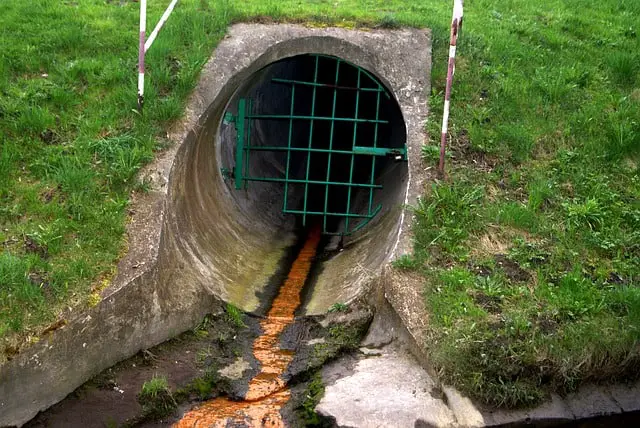Aeration septic system problems
If you have installed an aerobic septic system, there is a good chance your system alarm has sounded at least once. Generally, the sounding of the system alarm does not automatically mean the aerator is not doing its job properly and needs to be replaced, but rather that something is the matter with your septic system and you should inspect it. Ignoring the ringing alarm may prove to be a costly, since finding and fixing an issue while it is still small is far easier (not to mention cheaper) than letting a minor issue fester into a problem big enough to damage the septic system.
So, what are the most common aeration septic system problems? The most common problem is related to no power in the system, but a clogged chlorinator, non-functional submersible pump, low air pressure, and a broken timer all are pretty common issues one can face with an aerobic septic tank system. Thankfully, all the said problems are relatively easy to resolve — and in this post, we will show you how to do that.
So, keep on reading…
Call Septic Service Pros 1.855-925-0760 For Service or Request a Quote
What is an aerobic septic tank system and how does it work?
If you want to be able to identify when the aerator is not properly working, you must first understand what it is and how it works.
Septic systems are either anaerobic or aerobic. The main difference between the two is oxygen (or lack of it). While aerobic systems use bacteria that thrive in oxygen to breakdown the solid waste, anaerobic systems use bacteria that do not need oxygen. Without going into technical mumbo-jumbo, let it be sufficed to say that aerobic systems are far more efficient than anaerobic ones in breaking down human waste and other types of waste.
Since aerobic septic systems use oxygen-dependent bacteria to digest solid waste, they need a septic aerator. An aerator is a device that circulates oxygen bubbles in the wastewater tank. Thanks to this additional oxygen, aerobic microbes get a pretty stable environment and are able to efficiently breakdown solid waste.
In simpler terms, septic aerators speed up the entire process of digesting solid waste by injecting oxygen, which promotes bacteria growth. The greater the concentration of oxygen-dependent bacteria in your septic tank, the faster the solid waste will get broken down.
On the other hand, if the aerator stops working, the septic system will turn to anaerobic from aerobic. As a result, the solids will get broken down more slowly. Also, the effluent exiting the septic system will look more like raw sewage than odorless, clear effluent you get with an aerobic system. Since an aerator septic system usually has a smaller secondary treatment system, the latter will get overwhelmed quickly and likely suffer a major damage. For this reason, it is important that you pay attention to small signs that may indicate your aerator is failing.
Call Septic Service Pros 1.855-925-0760 For Service or Request a Quote
What are the most common aeration septic system problems and their solutions?
Here are some of the most common problems that people face with an aeration septic system.
The system has no power
The first thing you should do when your alarm goes off is to check the power supply. Check the power switch to ensure someone has not switched it off accidently.
If the power switch was accidentally turned off, turning it on should remedy the situation. However, if the power switch is turned on and still the alarm is ringing, take a look at the electrical beaker to ensure the aerobic septic system is getting uninterrupted power.
The chlorinator is clogged
As said earlier, an aerobic septic tank uses oxygen for breaking down and treating the wastewater in the septic tank. After the wastewater has been aerobically treated, it often gets pumped back into a sprinkler system to water a backyard or lawn. Before the treated wastewater enters the sprinkler system, it is thoroughly treated with chlorine. This helps in disinfecting the wastewater.
Over time, the chlorinator, which is generally heavily used all throughout the year, can get clogged. This may happen especially if you are not regularly performing regular maintenance. In case there is no issue with power but the septic tank alarm is still ringing, you should check the chlorinator to make sure that it is not clogged.
On a side-note, adding chlorine to your aerobic septic tank is something that you can do yourself. But before doing this, check the dosages and frequency specified in the instructional manual that came with your system. Also, avoid using pool chlorine. That is because it does not disinfect wastewater but can kill vegetation.
Problems with the submersible pump
If the submersible pump is not working, there is a good chance you will need to replace it. That said, sometimes the pump may develop an issue due to faulty wiring, bad float, or some damaged part. It would be best to call an expert to check the issue and remedy the problem.
Low air pressure
Like we said before, an aerobic septic system needs a regular supply of oxygen to work efficiently. If the system is not getting as much oxygen it needs to properly and speedily break down the solid waste, you must replace the aerator. Low air pressure within an aerobic septic system is a sure sign that you must get a new aerator.
Broken Timer
If the timer or photocell or both are broken, the septic system will not be able to release wastewater through the sprinklers. As a result of which, water will build up inside your septic system. An experienced professional will closely inspect your septic system and if a part needs to be replaced, they will do the needful to resolve the issue permanently.









